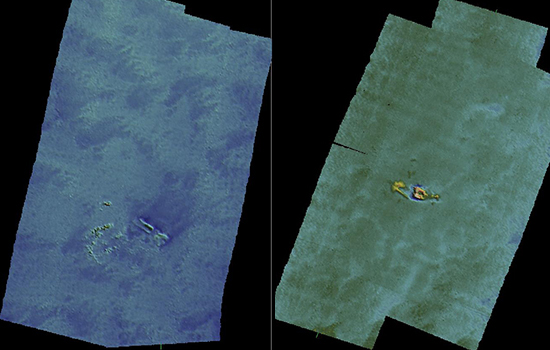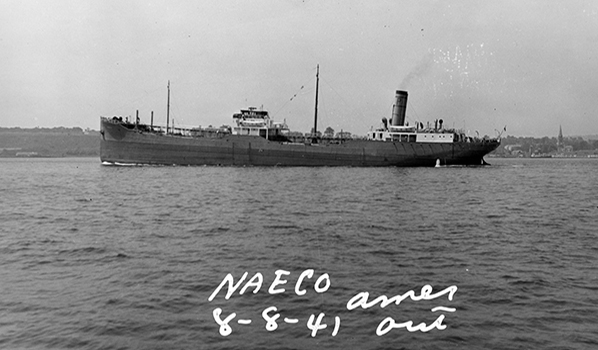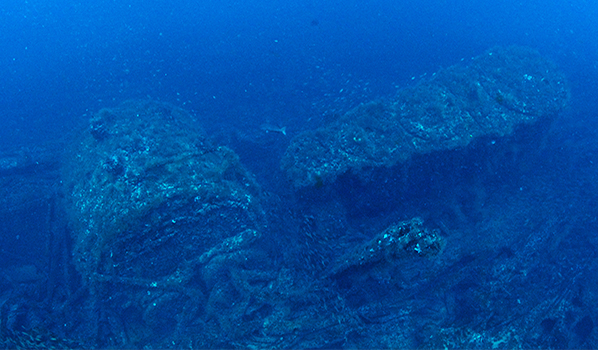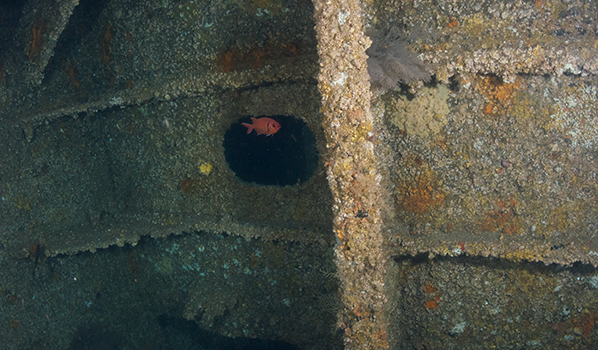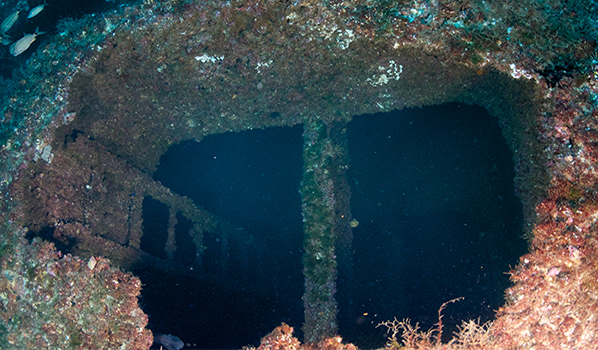Naeco
Ship Stats
Location: Bow Section: 34°3'27.68"N, 76°34'14.92"W (34.05769, -76.57081)
Stern Section: 34°1'31.22"N, 76°38'53.05"W (34.02534, -76.64807)
Depth: 140 feet
Vessel Type: Tanker
Length: 411.6 feet Breadth: 53.4 feet
Gross Tonnage: 5,373 Cargo: 72,000 barrels of kerosene and 25,000 barrels of heating oil
Built: 1918, Bethlehem Ship Building Corp. Ltd., Wilmington, Delaware, USA
Hull Number: 449 Port of Registry: Wilmington, Delaware, USA
Owner: Pennsylvania Shipping Company, Philadelphia, Pennsylvania, USA
Lloyd's Register Details: Steel hull, longitudinal framing, fitted for oil fuel, three decks, triple expansion three cylinder engine
Former Names: Charles M. Everest (Standard Vacuum Transportation Co., Socony- Vacuum Oil Co., U.S. Shipping Board, 1918-1933)
Date Lost: March 23, 1942
Sunk By: U-124 Survivors: 14 of 38 (24 dead)
Data Collected on Site: Multibeam sonar survey; still and video photography
Significance: Casualty of World War II's Battle of the Atlantic
Wreck Site
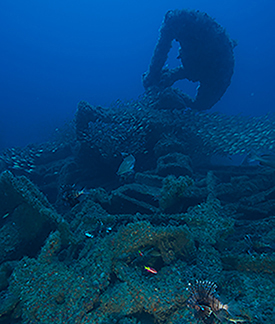

Resting between 140 - 145 feet of water off Cape Lookout, North Carolina, Naeco's wreck site consists of two large broken hull sections that are nearly a mile away from each other. Assessment of the more intact stern section showed that it rests in an area where the seabed is approximately 140 feet deep. There are areas of high relief that include the engines and boilers. There are many other intact sections of the stern visible, such as deck hatches, steering quadrant and the engine and boiler assembly.
Historical Background
Naeco was built during World War I and was originally named Charles M. Everest. The ship remained in control of the U.S. Shipping Board until purchased by the Socony-Vacuum Oil Company in 1919. In 1933, Charles M. Everest was sold and renamed Naeco. It operated out of Wilmington, Delaware, through the beginning of World War II.
Around mid-March, 1942, U-124 began operating off the North Carolina coast. The U-boat was having a successful month with seven vessels attacked in just nine days; and as U-124 lay in wait for its next victim, Naeco steamed its way. Traveling alone and unarmed from Houston, Texas, Naeco had 97,000 barrels of fuel oil on board and was heading to Seawarren, New Jersey. As Naeco approached Cape Hatteras, North Carolina, on March 23, 1942, U-124 saw its chance and began its attack.
The attack did not start well for U-124. As the U-boat launched its first torpedo at Naeco, it came up short and either missed or was a dud. Unaware of the attack, Naeco steamed on. U-124 launched a second torpedo and it found its mark hitting on the starboard side amidships. The explosion immediately ignited the cargo of fuel oil and engulfed the deck house and bridge. Burning fuel spread across the water and all hands in the bridge area and forward were killed. The Chief Engineer shut down the engines and turned on the steam smothering system to try to stop the burning fuel, but it was to no avail.
The explosion destroyed all the forward lifeboats, but at least ten crewmembers made it safely into the #3 lifeboat. USCG Dione rushed to the scene and arrived after the explosions and rescued the survivors from the life boat and two more from the water. The Navy fleet tug, USS Umpqua (ATO-25), and minesweeper USS Osprey (AM-56), also looked for survivors. Umpqua found one survivor on the burning stern and Osprey found one more survivor clinging to a partially destroyed life raft. In all, 24 crewmembers lost their lives in the attack.
Naeco continued to burn and eventually broke in two with the bow sinking first. The stern continued to float and burn until it sank a little while later. The remains of the vessel managed to float, and finally sink, off of Cape Lookout, North Carolina.
